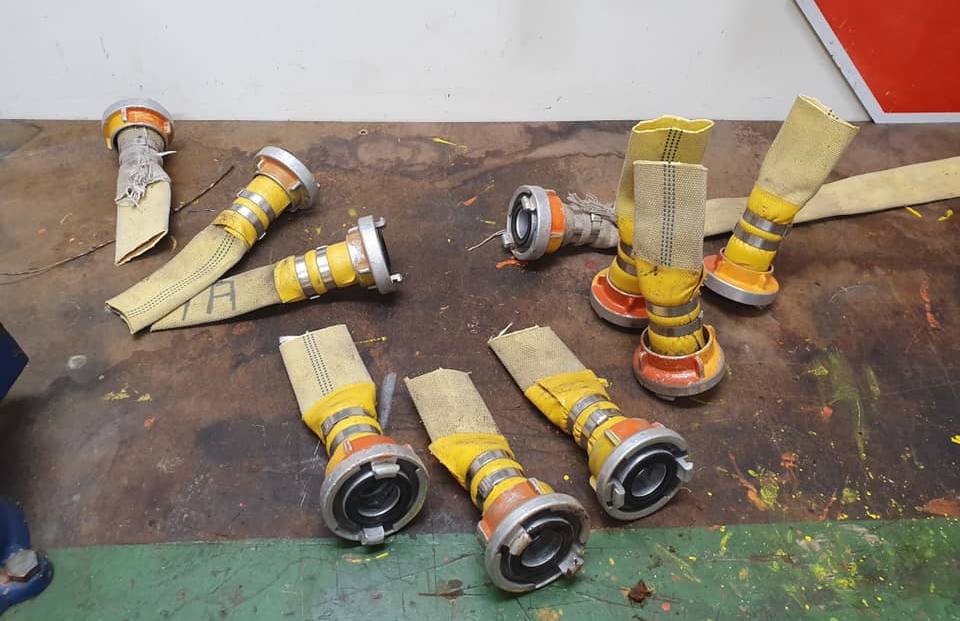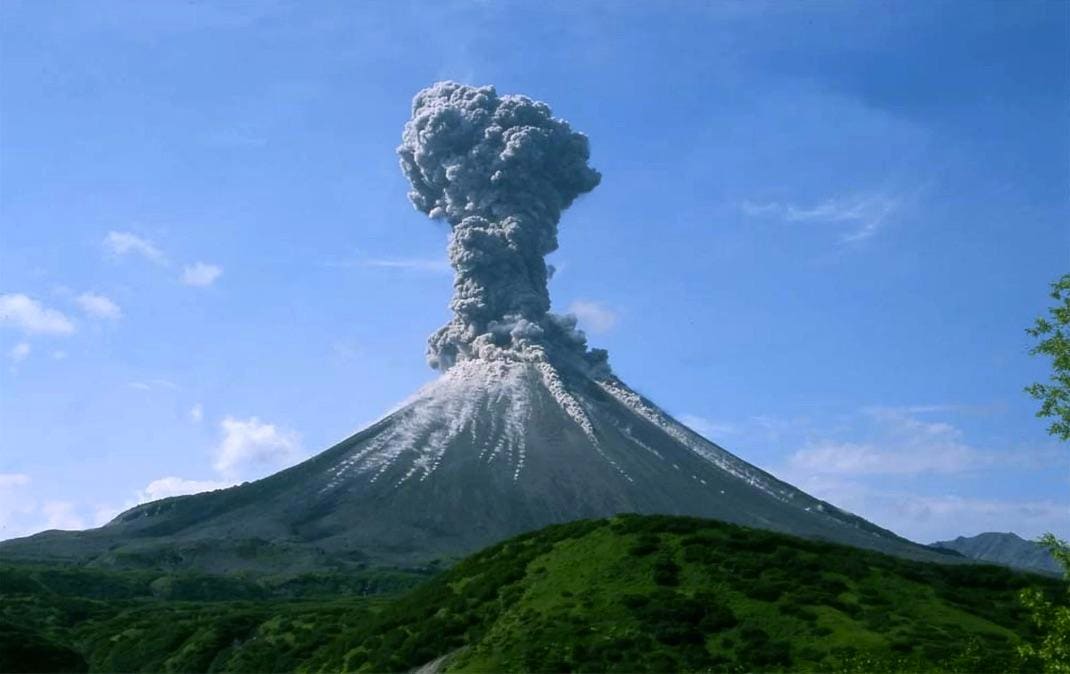- May 5, 2006
- 62,726
- 70,017
- AFL Club
- West Coast
Follow along with the video below to see how to install our site as a web app on your home screen.
Note: This feature may not be available in some browsers.

Source?
This is stupid and can't imagine the type of person that would do this but it's literally a 5 minute fix. Mind you, that's not going to help when they turn up on site to discover it's happened.This isn't very ok.
Firefighting hoses damaged in weekend vandal attack
Local News
- Krystyna Pollard
Rural Fire Service (RFS) volunteers have been left dismayed by a weekend act of senseless vandalism that has left their firefighting hoses severely damaged.
Members of the Grose Vale Rural Fire Brigade hung five lengths of hose up to dry at the Cabbage Tree Road station on Saturday afternoon, August 10, and arrived early on Sunday to discover they had been cut up.

Senseless: The vandalised hoses. Picture: Picture: Grose Vale Rural Fire Brigade/Facebook.
"Someone had cut the couplings off the hoses," NSW RFS Hawkesbury district manager, Superintendent Karen Hodges, told the Gazette.
"They have hoses left, but from our perspective it's disappointing that a community-based organisation has been subject to such vandalism by someone in our community.
A lot. Plus the radiant heat (heat that is melting metal) just ignites all ahead of it
True.Also, I 100% agree that the Aboriginal people looked after the land better than we have ever come close to. Caveat being I'm not sure they had to content with idiots lighting fires on terribly hot, dry and windy days.
The NSW fire chief mentioned that under catastrophic conditions the embers ahead of a fire front can travel up to 10km.
The NSW fire chief mentioned that under catastrophic conditions the embers ahead of a fire front can travel up to 10km.
Fires this week were even worse than that, with some fronts reporting embers 12km ahead of the front. How the fireys manage to fight something like that I have no idea.
In early 1961, a series of bushfires burned in the south-west region of Western Australia. The devastating fires burned large areas of forest in and around Dwellingup from 20 to 24 January, at Pemberton and in the Shannon River region between 11 and 15 February, and in the Augusta-Margaret River area in early March. There were also major fires which burned in the Darling Scarp around Kalamunda. The towns of Dwellingup and Karridale were largely destroyed by the fires, as were a number of smaller railway and mill settlements. There was no loss of human life.
Whilst the 1960 rainy season over the affected region had not been excessively dry, rainfall had been below average over the region affected by the fires ever since August of that year - thus the forests were perhaps even drier than they would normally be by January. However, the underlying cause of the Dwellingup fires lay far to the north in the Pilbara, where a tropical cyclone had formed on 15 January northeast of Darwin had followed a trajectory along the north west Western Australian coast and intensified north east of Onslow and then moved steadily southwards, hitting that town on 24–25 January while having a central pressure of 920 hPa. Hurricane-force winds demolished several buildings and storm surge inundated the town with 1.8 metres water. With a strong high pressure system to the east of the cyclone remaining almost stationary for some days, hot north-easterly winds developed and became so intense that by the 20th maximum temperatures throughout the south west were uniformly above 40 °C (104 °F) and remained at that level for the following five days. During this period, as the cyclone moved slowly along the coast it drenched Onslow and the neighbouring district, but only dry thunderstorms occurred in the south-west, which started fires that spread extremely rapidly in the hot, windy conditions.
The first fires were reported from Dwellingup, 110 kilometres (68 mi) south of Perth, Western Australia on 19 January and the following day fires erupted in the timbered country of the Darling Scarp around Mundaring and Mount Helena. Although as the cyclone tracked down the west coast some rain came around 25 January to ease the fires, not all were fully extinguished. Moreover, as the normal dry summer weather evaporated further moisture from the forests, when another severe cyclone hit Onslow on 12 February it caused even stronger winds (sustained at up to 60 kilometres per hour (37 mph) with much stronger gusts) and as this cyclone moved inland, lost intensity and produced no rain in fire-affected areas, decaying bushfires were re-ignited.
The fire from Dwellingup consequently moved downslope toward the major town of Pinjarra where it burned a significant portion of the town's buildings—123 people were left homeless. As the forests surrounding began re-igniting, the entire population of a number of other mill towns was relocated to Dwellingup in the following days. The fires continued to burn owing to the strong winds, and many tiny timber towns were completely burnt out - Holyoake, Nanga Brook, Marrinup and Banksiadale; and were never re-built.
The 2 March saw Onslow’s third cyclone in five weeks, which like the second did not produce any rain in the affected areas and led to temperatures reaching in Perth 100 °F (37.8 °C) on the first two days of March for the first time. Fires spread southward to Augusta-Margaret River Shire, though some in that area were thought to have been deliberately lit, and continued to rage within 25 kilometres of Perth city. Although rain was predicted, it did not eventuate. Despite the dryness of the cool change, an easing of the winds allowed fire fighters to finally bring the flames under control. However, in all it is estimated that the fires burned a total of 4,400 square kilometres (1,700 sq mi) of bushland, and property damage far exceeded this.
Following the fires, a Royal Commission was conducted to investigate causes and in following years many recommendations were made to improve controlled burning in the tall eucalypt forests of the south-west.
58 years ago:
1961 Western Australian bushfires - Wikipedia
en.wikipedia.org
Before the 'hur hur climate change is hoax Liberal voter' nuffy (nuffies?) starts (start?), the above is the reality of bushfire risk.
Every year it's hot and dry, every year there are tropical cyclones in the North, every year people prepare for fires, every year there are fires and every year people put all the thoughts and prayers they collect from politicians and social media towards hoping that the stars don't align to provide the worst possible conditions for fires to start and spread.
Where climate change comes in is the effect on weather patterns. Perth just had the hottest and driest September on record, October was drier than the long term average and November is shaping up as hot and dry also. It doesn't augur well for Summer starting in 2 weeks time. If Perth and the SW (touch wood) has a mild fire season that doesn't invalidate the effect of climate change nor does it mean that hot and dry Spring doesn't have an effect on the risk going into Summer. If it's regularly too hot and dry to complete controlled burns in Autumn, Winter and Spring then that's a huge concern. But as above you can have an unseasonably hot March in any decade. Perth has also had 147mm and 193mm of Summer rainfall 2 of the last 3 years when the long term average is about 35mm. Last Summer was dry as hell with a wetter than usual Winter. Every year has different climatic and climactic factors in play. It's entirely possible that after wet Winter we will have an average/mild Summer and a horrible fire season. I hope that is not the case but it only takes one dick or even one stray spark on the wrong day to wreak havoc.
People want to frame it as either 'bushfire therefore climate change' or 'well we've always had bushfires therefore not climate change' which is not helpful.
Is having bushfires earlier in the season better?
You really have the depth of a puddle?hur hur climate change is hoax Liberal voter
Is having bushfires earlier in the season better?
Theoretically yes if you consider that say November to February offers 4 months of hot dry weather for ground level fuel to dry out. If you try and burn firewood that has been out in the winter months it's pretty green.
Practically, a bushfire in October or November can be just as bad as one in March or April. If seasons shift then practices need to shift along with them. If seasons become more unpredictable that's near impossible to manage.
The cyclones have been trending down over the last thirty/forty years too.
March Bushfire premiersNah bushfires need to be peaking at the pointy end of the year if they really wanted to be rated.
When you realise that volcanism contributes 645 million tons of CO2 per year –Out of interest how much comes out of volcanic eruptions?

 www.forbes.com
www.forbes.com
Out of interest how much comes out of volcanic eruptions?
